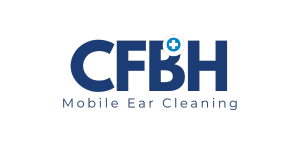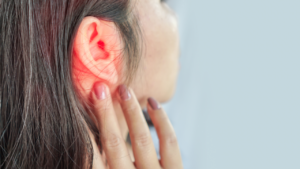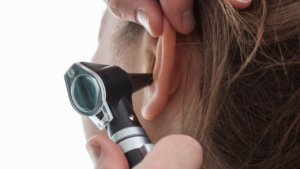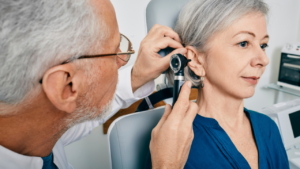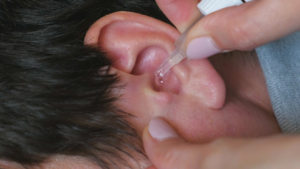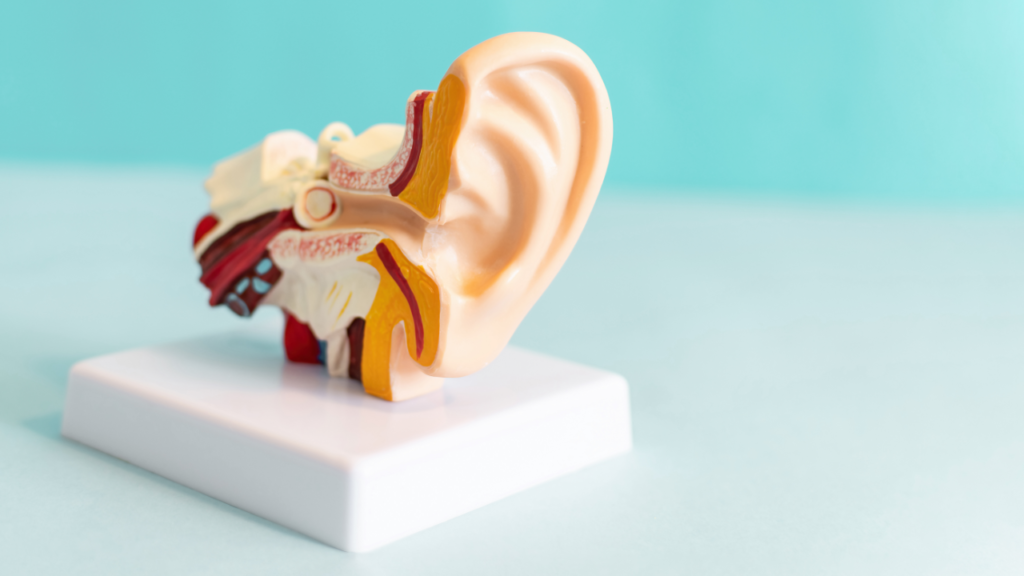
Are you struggling with excess ear wax and considering options for removal? In this article, we will explore the differences between ear suction and syringing, including the method of removal, effectiveness, risk of injury, and time/cost considerations. We will also discuss whether ear suction is better than syringing for individuals with specific conditions such as hearing aids, ear infections, tinnitus, and narrow ear canals. We will explore alternative methods such as ear drops, olive oil, and ear irrigation. Let’s dive in!
Key Takeaways:
- Ear suction and syringing are two common methods used to remove ear wax, but they have key differences in their method of removal and effectiveness.
- For people with hearing aids, ear infections, tinnitus, or narrow ear canals, ear suction may be a better option due to reduced risk of injury and higher success rates.
- There are alternative methods to ear suction and syringing, such as ear drops, olive oil, and ear irrigation, which may be more suitable for certain individuals depending on their specific needs and preferences.
What Is Ear Suction?
Ear suction is a professional ear wax removal method performed by practitioners to effectively clear the ear canal of excess ear wax.
This innovative technique involves using a specialised instrument that creates a gentle suction to safely extract accumulated ear wax without causing any discomfort or damage to the delicate ear structures.
One of the primary benefits of ear suction is its precision in targeting the affected areas, ensuring a thorough removal of ear wax while minimising the risk of pushing the wax deeper into the ear canal, which can happen with methods like cotton buds.
By removing excess ear wax through suction, individuals can experience improved hearing, reduced risk of ear infections, and enhanced overall ear health.
What Is Ear Syringing?
Ear syringing is a traditional method used for ear wax removal that involves flushing the ear canal with water to dislodge and remove built-up ear wax.
During the procedure, the ear specialist will carefully aim a syringe filled with warm water into the ear canal, allowing the water to flow in a controlled manner around the wax. The pressure created by the water helps to soften and dislodge the ear wax, making it easier to clear out. It’s essential to note that ear syringing is not suitable for everyone, especially those with a history of ear issues or a perforated eardrum.
Compared to other ear wax removal methods such as ear irrigation or ear drops, ear syringing is considered more invasive and carries potential risks. In some cases, the procedure can lead to complications like infection, injury to the ear canal, or even further impaction of the ear wax.
What Are The Differences Between Ear Suction And Syringing?
The key differences between ear suction and syringing lie in their methods of removing ear wax and the effectiveness in treating ear wax build-up.
Ear suction, also known as microsuction, involves a gentle suction mechanism to remove earwax, making it a popular choice due to its precision and minimal discomfort. On the other hand, syringing, also called irrigation, employs a gentle flow of warm water to dislodge earwax, which may be perceived as a less invasive method by some individuals.
When considering safety, ear suction is generally considered safer than syringing as it does not involve forcefully syringing water into the ear canal, reducing the risk of damaging the delicate ear structures or causing infections. Nevertheless, syringing can be effective for those with harder or impacted wax, provided it is conducted by a trained professional.
Method of Removing Ear Wax
The method of removing ear wax differs significantly between ear suction and syringing, with auditory microsuction focusing on gentle, precise extraction compared to the flushing technique used in ear syringing.
Auditory microsuction, also known as ear irrigation, utilises a small, gentle suction device to remove excess wax from the ear canal without the need for water irrigation. This technique is particularly advantageous for individuals with sensitive ear canals, as it reduces the risk of discomfort or damage caused by the forceful flushing of water in traditional syringing methods.
- One of the key benefits of auditory microsuction is its ability to provide a clear view of the ear canal using a specialised magnifying instrument, allowing for precise removal of even the most stubborn wax deposits.
- This method is considered safer as it minimises the risk of ear infection or damage to the eardrum often associated with syringing, making it a preferred choice for many healthcare professionals.
Effectiveness
When assessing effectiveness, ear suction tends to be more efficient in removing build-up earwax and promoting inner ear health compared to ear syringing, which may result in ear wax falls and incomplete removal.
Ear suction, also known as microsuction, utilises gentle suction to safely and effectively remove excess earwax without the need for water irrigation. This method is particularly beneficial for individuals with sensitive ear canals or a history of ear issues.
On the other hand, ear syringing involves flushing the ear canal with water under pressure to dislodge and remove earwax. This technique can sometimes push the wax further into the ear canal, leading to impacted earwax or even causing ear wax falls, potentially resulting in partial extraction.
Maintaining proper ear hygiene is crucial in preventing complications such as hearing loss, tinnitus, or ear infections that can arise from untreated earwax build-up. Seeking professional guidance from an audiologist or ENT specialist can help in choosing the most suitable method for safe and effective earwax removal.
Risk of Injury
Ear suction generally poses a lower risk of injury compared to ear syringing, particularly in cases of ear wax blockages where safe earwax removal methods such as ear drops may be recommended.
When considering the risks associated with earwax removal techniques, it’s important to highlight that syringing can sometimes result in discomfort, damage to the delicate ear canal, or even impact the eardrum. On the other hand, ear suction is known to be a gentler and more controlled method, reducing the likelihood of such injuries.
Safe removal practices involve using appropriate tools and techniques to loosen and extract ear wax without causing harm. Opting for ear drops beforehand can help soften the wax, making it easier for the wax to be removed safely.
Time and Cost
In terms of time and cost, ear suction may involve higher expenses but offers more efficient ear wax removal services compared to ear syringing or ear irrigation methods, particularly for individuals with excess ear wax.
Ear suction, also known as microsuction, is a gentle and precise procedure done by qualified professionals using a small suction device that can effectively remove stubborn ear wax without the need for water irrigation. Though it might be pricier, the accuracy of ear suction reduces the chances of complications that can arise from ear syringing, such as water lodging in the ear canal or the risk of ear injury.
Is Ear Suction Better Than Syringing?
When considering which method is superior, ear suction proves to be more advantageous than syringing, especially for individuals with ear wax blockages or those seeking a thorough ear cleaning method.
Ear suction offers a more precise and controlled approach to removing ear wax, reducing the risk of complications such as perforated eardrums that may occur with syringing. Additionally, ear suction allows for the adjustable pressure to be applied, ensuring a gentle and efficient process. This method also minimises the chances of water entering the ear canal, which can sometimes happen during syringing, potentially causing discomfort or infection. Ear suction can be easily tailored to individual ear anatomy, making it a versatile option for all ages and ear conditions.
For People With Hearing Aids
Individuals using hearing aids may benefit more from ear suction due to its precise wax removal treatment and availability in professional hearing clinics compared to syringing methods.
One of the primary advantages of ear suction for those with hearing aids is its tailored approach to wax removal. With this method, hearing healthcare professionals can precisely target and remove excess wax build-up without putting the delicate components of the hearing device at risk. This tailored treatment ensures that the ear canal is thoroughly cleaned, optimising the performance of the hearing aid and enhancing the wearer’s overall auditory experience.
The gentle nature of ear suction minimises the discomfort that some individuals may experience with other wax removal techniques, making it particularly suitable for those who rely on hearing aids for daily communication.
For People With Ear Infections
Individuals suffering from ear infections may find ear suction more suitable than syringing, as it allows for precise wax removal services under the expertise of an ear specialist, particularly in cases of severe wax build-up.
Ear suction offers a gentle yet effective method of removing wax compared to traditional methods like syringing, which can be uncomfortable and less precise. By entrusting the task to specialised ear specialists, individuals can benefit from a tailored approach to their ear health needs, ensuring that the removal process is conducted safely and efficiently.
This specialised service is especially beneficial for those experiencing significant wax build-up, which can exacerbate ear infections and lead to hearing impairments. The targeted nature of ear suction enables the specialist to address the root cause of the issue, providing relief from symptoms and aiding in the overall recovery process.
For People With Tinnitus
For individuals experiencing tinnitus, ear suction may offer a more suitable approach than syringing, especially when addressing ear wax blockages and utilising ear drops as part of the treatment plan available in professional hearing clinics.
Ear suction, also known as microsuction, is a method that involves using a gentle suction device to remove excess earwax and debris from the ear canal. Unlike syringing, which involves flushing the ear with water, ear suction is considered to be a safer and more precise technique for individuals with tinnitus. Incorporating ear drops into the treatment regimen can help soften the earwax, making it easier to remove during the suction process. This comprehensive approach offered in hearing clinics ensures that the ear is thoroughly cleaned, reducing the risk of infections and improving overall hearing health.
For People With Narrow Ear Canals
Individuals with narrow ear canals may prefer ear suction over syringing, as it offers tailored wax removal solutions that are less intrusive and more compatible with the anatomy of the ear canal.
Ear suction is a gentle method that involves using a specialised device to remove excessive earwax without the need for water irrigation, making it a suitable option for those with narrow ear canals. This technique allows for precise control and customisation, ensuring that the delicate structures within the ear canal are not harmed during the removal process. Ear suction can be particularly beneficial for individuals who have had negative experiences with ear syringing, as it tends to be a more comfortable and less intimidating procedure.
What Are The Alternatives To Ear Suction And Syringing?
Apart from ear suction and syringing, individuals may explore alternative methods such as using ear drops, olive oil, or ear irrigation to manage ear wax accumulation and promote ear health.
Ear drops are a common choice for softening ear wax, making it easier for the wax to naturally work its way out of the ear. Olive oil, known for its gentle properties, can also be used to soften the wax before removal. On the other hand, ear irrigation involves flushing the ear canal with a gentle stream of water, helping to dislodge and remove excess wax.
When compared to traditional methods, the alternative approaches like ear drops, olive oil, and ear irrigation are often considered safer and more gentle on the delicate ear canal. They can be particularly beneficial for individuals with sensitive ears or those who have a history of ear issues.
Ear Drops
Ear drops are a common alternative for wax removal techniques, providing a gentle and effective way to support ear health and manage excess ear wax.
These specialised drops often contain softening agents such as saline solution or mineral oil that help to break down the hardened wax, making it easier to drain out naturally. By applying a few drops into the ear canal and allowing them to sit for a few minutes, the wax becomes softer and can be expelled more easily.
Ear drops act as a preventive measure against ear blockages and ear infections by maintaining the natural balance of ear wax production. Regular use of ear drops can also promote ear hygiene by helping with the removal of dirt and debris trapped in the ear canal.
Olive Oil
Olive oil is another alternative to ear syringing or irrigation for managing excess ear wax, offering a natural and gentle solution for ear wax build-up.
Ear Irrigation
Ear irrigation involves flushing the ear canal with a gentle stream of water to remove excess ear wax, offering a non-invasive wax removal treatment available in professional ear health services.
During ear irrigation, a specialised device is used to carefully direct the water flow into the ear canal, loosening and dislodging the ear wax buildup.
This method is particularly beneficial for individuals with excessive ear wax or blockages as it provides a thorough cleaning of the ear canal without causing any damage. The controlled water pressure ensures that the process is safe and minimises the risk of injuring the delicate structures within the ear. Patients often experience immediate relief from symptoms like hearing loss or discomfort after undergoing ear irrigation.
